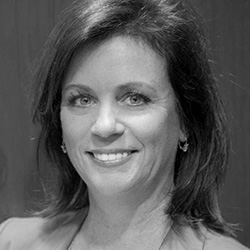News
Improving Access to Healthcare and Services
October 19, 2021
“Good health is a state of complete physical, mental, and social well-being and not merely the absence of disease,” said Brian Harper, M.D., M.P.H., chief medical officer and vice president for equity and inclusion at “Improving Access to Healthcare and Services,” a panel discussion including community leaders and health practitioners.
The panel focused on the social determinants of health that often lead to poor health statistics in underserved communities of color, as well as identifying gaps in access to preventative healthcare services, the need to address health needs holistically, and exploring the innovative ways community organizations can support underserved communities.
Panelists included Deborah DeSantiago, assistant to the president, for the Long Island Hispanic Chamber of Commerce; Jennifer H. Mieres, M.D., chief diversity and inclusion officer and senior vice president at the Center for Equity of Care and at Northwell Health; and Theresa Sanders (M.S. ’03), president and chief executive officer for the Urban League of Long Island, Inc.
The lack of access to comprehensive healthcare often contributes to health inequities. Some neighborhoods may have only a single health provider. Mieres stressed the need for a multipronged approach with health education in schools and unified public/private partnerships. “We need to have access to all this to promote a healthy lifestyle,” she explained. “We need to change the narrative on how these communities look at health and foster a shared partnership.”
Added Sanders, “The system changed with COVID. We had to pivot and get testing and vaccination to all communities, or the spread of the disease was not going to stop. We learned to use technology, particularly social media, to get information to people in unconventional places.”
“We utilized resources to get the information to people where they are—churches, soccer fields, and neighborhood restaurants,” said DeSantiago.
Even when communities of color have health insurance and access to care, health disparities in outcomes still exist. This can be attributed to a lack of access, trust, and health literacy. Preventive healthcare such as routine cancer screening, annual physicals, and vaccinations can be particularly challenging for communities of color.
Behavioral changes, such as adopting a healthy diet or scheduling preventative screenings, can make a big impact. Communicating in the patient’s language or dialect will assist them in understanding the health provider. “Forty-five percent of our patients have a preference for a language other than English,” said Mieres. “Patient advocates can act as a liaison between the patient and provider and facilitate communication.”
The panel also stressed the importance of partnerships, and that means including everyone at the table. “When you have the right people are at the table, they have the opportunity to give feedback and can work together in collaboration to create a level of understanding,” said Sanders.
“Your health is your most important asset,” said Mieres. “Healthcare strategies should be customized for the patient.” DeSantiago advised, “Get to know your audience. You cannot put a broad brush on it; present it in a different framework based on that population’s cultural norms.”
The panel ended the discussion with a conversation about the underrepresentation of Black and brown students in the healthcare professions and the need for the landscape to change in terms of demographics. Sanders advised parents, “Start developing and nurturing an interest in math and science early on in K-12,” said Sanders. “And by the time the student gets to college, mentoring is one of the key aspects of success.”
Students may also want to consider a non-clinical role in healthcare where one can still be an asset, said DeSantiago. “Healthcare is a team sport,” said Mieres. “There are multiple team members that make contributions to the patient’s health holistically.”
Watch the full conversation.

By Carol Lane




